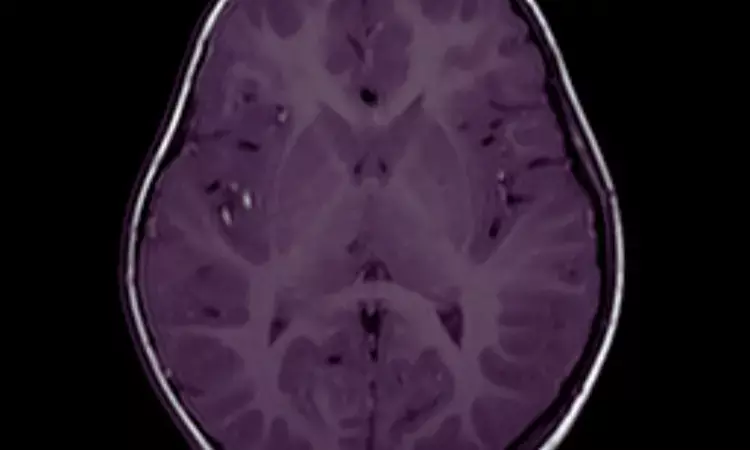- Home
- Medical news & Guidelines
- Anesthesiology
- Cardiology and CTVS
- Critical Care
- Dentistry
- Dermatology
- Diabetes and Endocrinology
- ENT
- Gastroenterology
- Medicine
- Nephrology
- Neurology
- Obstretics-Gynaecology
- Oncology
- Ophthalmology
- Orthopaedics
- Pediatrics-Neonatology
- Psychiatry
- Pulmonology
- Radiology
- Surgery
- Urology
- Laboratory Medicine
- Diet
- Nursing
- Paramedical
- Physiotherapy
- Health news
- Fact Check
- Bone Health Fact Check
- Brain Health Fact Check
- Cancer Related Fact Check
- Child Care Fact Check
- Dental and oral health fact check
- Diabetes and metabolic health fact check
- Diet and Nutrition Fact Check
- Eye and ENT Care Fact Check
- Fitness fact check
- Gut health fact check
- Heart health fact check
- Kidney health fact check
- Medical education fact check
- Men's health fact check
- Respiratory fact check
- Skin and hair care fact check
- Vaccine and Immunization fact check
- Women's health fact check
- AYUSH
- State News
- Andaman and Nicobar Islands
- Andhra Pradesh
- Arunachal Pradesh
- Assam
- Bihar
- Chandigarh
- Chattisgarh
- Dadra and Nagar Haveli
- Daman and Diu
- Delhi
- Goa
- Gujarat
- Haryana
- Himachal Pradesh
- Jammu & Kashmir
- Jharkhand
- Karnataka
- Kerala
- Ladakh
- Lakshadweep
- Madhya Pradesh
- Maharashtra
- Manipur
- Meghalaya
- Mizoram
- Nagaland
- Odisha
- Puducherry
- Punjab
- Rajasthan
- Sikkim
- Tamil Nadu
- Telangana
- Tripura
- Uttar Pradesh
- Uttrakhand
- West Bengal
- Medical Education
- Industry
Gadopiclenol Enables Safer Pediatric Brain MRI with Half the Gadolinium Dose: Study Suggests

USA: A recent study published in the American Journal of Roentgenology supports the use of gadopiclenol as a lower-dose alternative to conventional gadolinium-based contrast agents (GBCAs) in pediatric brain MRI. The research, led by Dr. Sergio Valencia of Massachusetts General Hospital and Harvard Medical School, highlights the potential of gadopiclenol to minimize cumulative gadolinium exposure in children who require repeated imaging.
Gadopiclenol, a macrocyclic contrast agent approved by the U.S. FDA in 2022, is known for its high T1 relaxivity, enabling significant dose reduction compared to other GBCAs. This study compared the performance of gadopiclenol at 0.05 mmol/kg with gadoterate meglumine at the standard 0.1 mmol/kg in the same pediatric patients to assess contrast enhancement quality.
The retrospective study included 38 children (mean age 11.1 years) who underwent both types of contrast-enhanced brain MRI within a six-month span, using identical imaging protocols and field strength. Researchers analyzed three key postcontrast MRI sequences: 3D T1-weighted fast-spin echo (FSE), 3D T1-weighted gradient-recalled echo (GRE), and 2D fluid-attenuated inversion-recovery (FLAIR).
Contrast ratio (CR) and contrast-to-noise ratio (CNR) were measured in physiologically enhancing brain structures, such as the choroid plexus, pituitary gland, dural venous sinuses, and turbinate mucosa. Two neuroradiologists independently evaluated the quality of contrast enhancement using a side-by-side blinded Likert scale assessment.
The study revealed the following findings:
- Gadopiclenol demonstrated significantly higher contrast ratios than gadoterate for imaging the choroid plexus on 3D T1W FSE.
- It also showed superior contrast for the turbinate mucosa on 3D T1W GRE.
- Gadoterate was favored over gadopiclenol for visualizing the turbinate mucosa on FLAIR sequences.
- Contrast-to-noise ratios between gadopiclenol and gadoterate did not show significant differences across the evaluated brain structures.
- Both radiologists consistently preferred gadopiclenol for visualizing the choroid plexus and pituitary gland on 3D T1W FSE.
- Reader preferences varied slightly depending on the brain structure and MRI sequence used.
- Most other structural comparisons showed no significant difference between the two contrast agents.
The authors noted that reducing cumulative gadolinium exposure is particularly important in children, who have a longer expected lifespan and may be more vulnerable to the long-term effects of gadolinium retention. Given its lower required dose and comparable—if not superior—performance in certain sequences, gadopiclenol offers a promising alternative for pediatric neuroimaging.
The authors concluded, "The study provides evidence that gadopiclenol is a viable option for pediatric brain MRI at half the traditional GBCA dose, potentially improving safety for young patients who undergo serial imaging."
Reference:
Valencia S, Cortes-Albornoz MC, Ferracioli SF, Griffin H, Husseini JS, Machado-Rivas F, Victoria T, Gee MS, Jaimes C. Gadopiclenol Versus Gadoterate Meglumine for Pediatric Brain MRI: An Intraindividual Comparison of Contrast Enhancement. AJR Am J Roentgenol. 2025 Jun 25. doi: 10.2214/AJR.25.33201. Epub ahead of print. PMID: 40557986.
Dr Kamal Kant Kohli-MBBS, DTCD- a chest specialist with more than 30 years of practice and a flair for writing clinical articles, Dr Kamal Kant Kohli joined Medical Dialogues as a Chief Editor of Medical News. Besides writing articles, as an editor, he proofreads and verifies all the medical content published on Medical Dialogues including those coming from journals, studies,medical conferences,guidelines etc. Email: drkohli@medicaldialogues.in. Contact no. 011-43720751


